
Visible Crack on Outside of Foundation
While the customer called after finding cracks inside of the basement, one crack is also visible outside, and clearly causing problems. Not only does this compromise the structure of the home, but it also allows water to infiltrate the basement and wreak havoc.

Sagging Basement in Reading, MI
Mold is visible on the overhead beams, as well as early signs of decay, due to the moisture entering the basement through the wall crack.
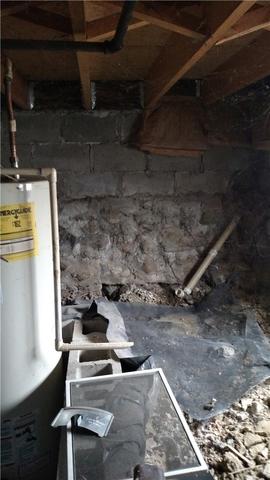
Efflorescence and Other Signs of Foundation Issues
Efflorescence, while it can be a surface issue only, can also indicate a compromised foundation due to the weakening of the blocks from water.
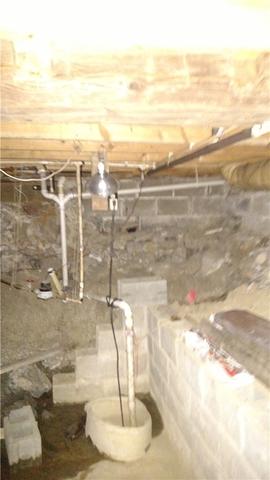
Crumbling Basement Wall in Reading Home
Debris from the compromised wall doesn't instill much confidence in the safety of the foundation. That's where piering comes in.
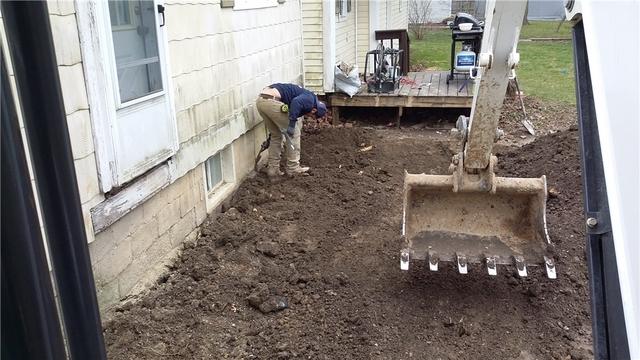
Soil Excavation Before Pier Installation
Before we can install the piers, we have to excavate the soil surrounding the affected wall, all the way down to the base of the foundation. Don't worry, we'll put the soil back.

Placing Piers for Installation
One of our production crew members places the piers for optimum effect before they are drilled down into the soil.
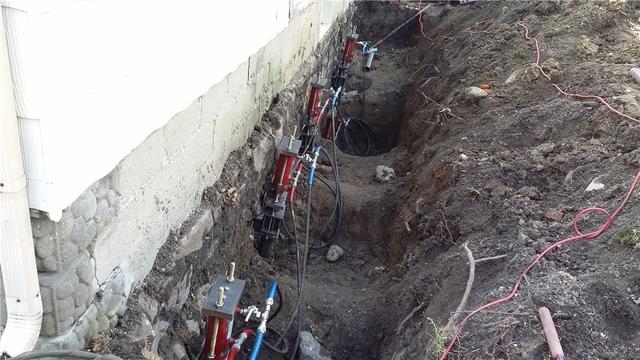
Helical Piers Installed in Reading Home
The helical piers are drilled down to the appropriate depth to both anchor in virgin soil and bear the weight of the home in order to stabilize the foundation. In this case, the piers were placed at depths of about 9.5 and 14 feet.
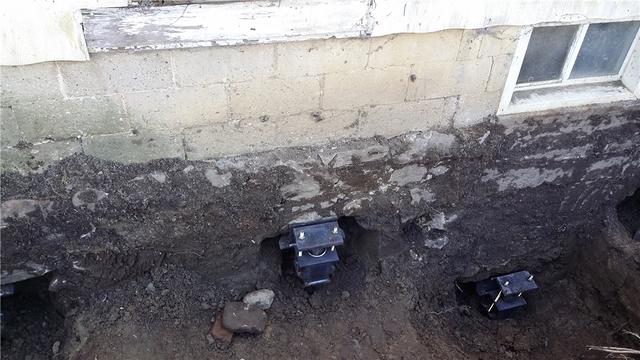
Close-up of Helical Pier Installation
Once the piers are drilled to the appropriate depth, they are anchored into the foundation and can now support the house.
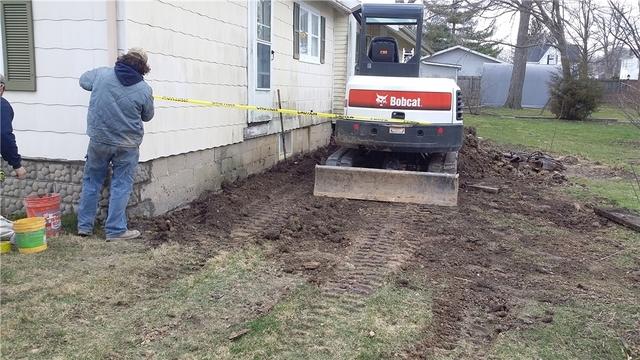
Restoring Soil After Piering
Once the piers are installed, we replace the excavated soil to restore the yard to a safe and level plane - just like the house!









